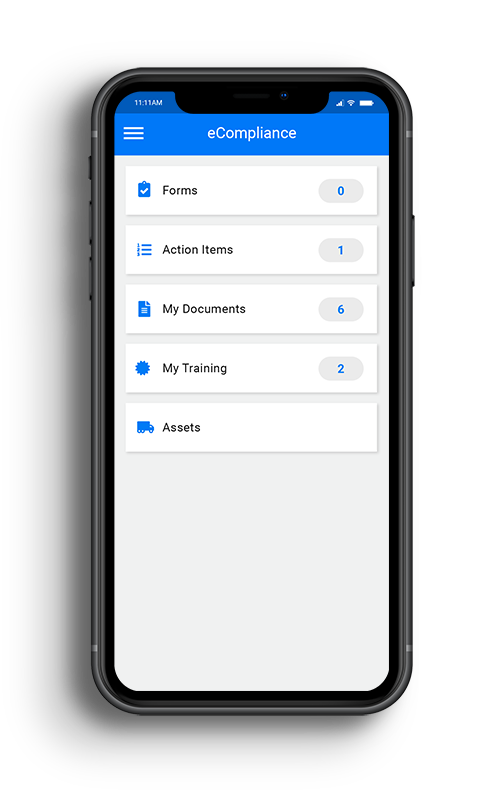
Share this Post
PUBLISHED
September 27, 2022
READ TIME
4 Minutes
WRITTEN BY
![]() Dina Adlouni
Dina Adlouni
Dina is the resident Content Writer at EcoOnline North America . When she’s not writing about health and safety, you’ll find her enjoying a cup of tea while watching her favorite sitcom.
What is Human and Organizational Performance?
A shift from current approaches to safety, Human and Organizational Performance (also known as HOP) is a new way of thinking when it comes to mitigating risks. This concept highlights the context and environment of the worker, rather than the worker or their behavior.
It also focuses on the notion that the jobsite or workplace must have certain elements in place to accommodate failure and errors, which will inevitably occur. Much like a car with seatbelts and sensors in place which anticipate driver error, a work environment should also have certain elements in place to withstand incidents and accommodate failure.
Understanding the 5 Principles of Human and Organizational Performance
There are five principles when it comes to Human and Organizational Performance (HOP), outlined by Dr. Todd Conklin, an expert in this area. They include:
1. Human error is normal
2. Blame fixes nothing
3. Learning is vital
4. Context drives behavior
5. How you respond to failure matters
These principles focus on the idea that mistakes are normal and the way senior management and workers collaborate and communicate matters. It is through this ideology that organizations can build more resilient safety management systems.
Let’s dive a little deeper into each principle:
1. Human error is normal
It is only natural that mistakes and incidents will occur at the workplace. In fact, it would be quite surprising if this weren’t the case. This is exactly the premise behind this first principle.
Management and employers need to design their safety management system to withstand specific failures, with this in mind. This will help them build a more resilient and robust safety program with particular policies and procedures in place.
2. Blame fixes nothing
The second principal centers around the idea that blame is ineffective. Looking at investigations into incidents as opportunities for humiliation, is not the way to better work practices. In fact, discipline has no place when it comes to safety.
Employers and safety professionals must create a sense of psychological safety where employees feel comfortable enough to voice their opinions and provide feedback. When employees feel this sense of security, they will be more inclined to share observations rather than hiding incidents without loss which have occurred. Then employers can dive into the root cause behind certain errors and closely examine conditions in the environment which may have led to this failure, rather than immediately blaming the worker.
3. Learning is vital
To build a resilient safety management system, employers and key players must be consistently willing to learn. Consider the Plan, Do, Check, Act model found within the continuous improvement process; organizations must constantly assess for gaps and inefficiencies and implement corrective actions and measures to rectify them. Then, they must evaluate the implementation of their actions and whether they were effective. It is through this process that organizations and safety management systems get stronger and stronger.
Each time this process is conducted, employers and management learn more and more about the strengths and weaknesses present within their safety program. This way they can put measures in place which will make more room for error, with the goal of building stronger safety practices and creating safer work environments.
4. Context drives behavior
Thinking of the context in which an employee is working, is vital to understanding their behavior. For example, let’s say a worker is part of an environment where they do not receive regular training on the use of a particular tool? Or perhaps new contractors working on-site are not shown all the possible risks and hazards present in their work environment?
Knowing that the context of the environment and organization drives worker behavior will help employers and management pinpoint specific weakness within their safety program. Improvements can then be implemented to rectify these issues.
5. How your respond to failure matters
Finally, the way senior leadership and employers respond to errors and failure matters. This sets the tone for the effectiveness of the safety management system and how resilient the organization will be when faced with challenges.
For example, if management reprimands workers and causes a scene whenever errors occur, workers may be inclined to not report certain incidents and cover up for their colleagues. This is not a healthy approach, as it is not effective in reducing incidents on-site. On the contrary, this may increase the number of incidents since workers are not reporting the risks and hazards which may be present.
How EcoOnline Can Help
The EcoOnline suite of solutions can help you build a more resilient and adaptable safety program, following the principles of HOP. With the ability to digitize and centralize all information into one platform, you can easily spot gaps and inefficiencies in your safety program to work on. It is also easily accessible by all members of the organization from boardroom directors to front-line workers, streamlining communication and collaboration across the company.
Our EcoOnline EHS management system also allows you to track toolbox talks and assign eLearning courses to your team, to continue to hone their skills and make them aware of risks in their particular job task. Our mobile app also gives you the ability to empower your front-line by putting safety in the palm of their hands.
Curious to learn more about how we can help you build a safer work environment following the HOP approach? Read our new guide How to Strengthen Your Safety Management System with Human and Organizational Performance or speak to an EcoOnline representative today.
Learn How You Can Get EcoOnline
Complete this form and one of our safety experts will be in touch.

